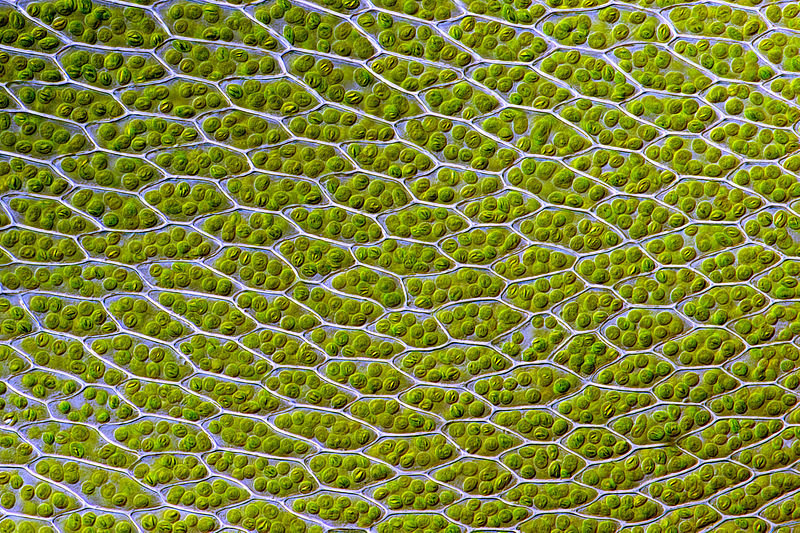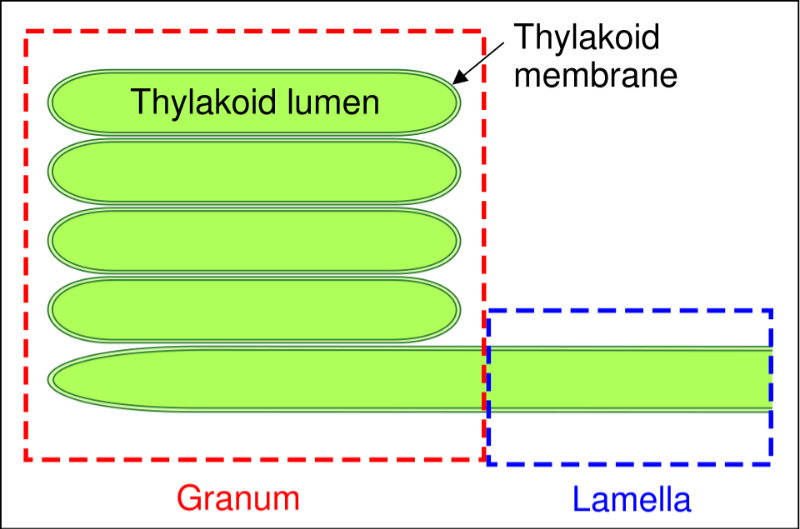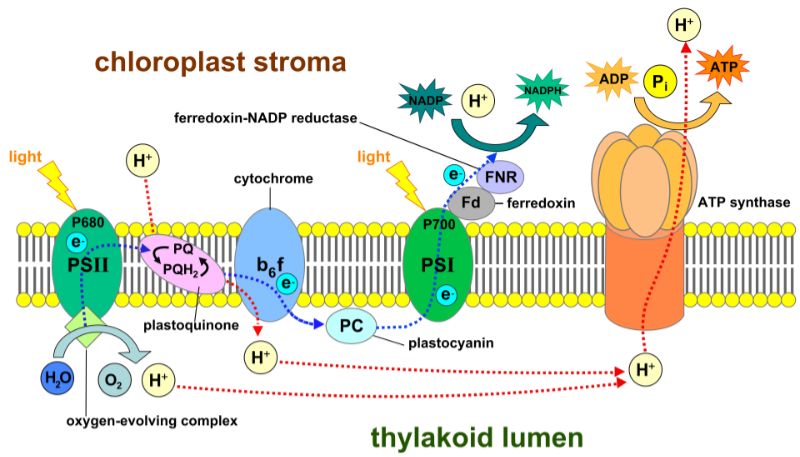The Stroma
What is the Stroma?
Fig. 1 below is a simple rendition of a chloroplast, the photosynthesising organelle of plants and algae. The stroma is the fluid-filled space surrounding the grana (thylakoid stacks) inside that chloroplast.

Attribution: Public Domain, https://en.wikipedia.org/w/index.php?curid=10483833
The stroma of a chloroplast is analogous to the fluid-filled space in cells called the cytoplasm. In fact, the chloroplasts reside in the cytoplasm of plant and algae cells (Fig. 2). One may say that the stroma is to the chloroplast as the chloroplast is to the cytoplasm.

Attribution: Des_Callaghan, CC BY-SA 4.0 , via Wikimedia Commons
The Stroma’s Roles
One role of the stroma is to be a suspension medium for the chloroplastic DNA and ribosomes.(Chloroplasts and mitochondria are the only self-replicating organelles with their own DNA and ribosomes.)
Another function is as the region in which the light-independent reactions of photosynthesis occur.
But before covering that let’s first go over the light-dependent reactions again.
Overview of Light-Dependent and Light-Independent Reactions of Photosynthesis
Light-Dependent Reactions
The light-dependent reactions of photosynthesis occur in the thylakoids (Fig. 1). More accurately, in the thylakoid membrane, with lumen participation (Fig. 3). They are light-dependent as they are fully reliant on photons striking the thylakoid membrane to begin. These reactions never occur in the dark.

Attribution: http://en.wikipedia.org/wiki/Image:Granum.png, CC BY-SA 3.0 , via Wikimedia Commons
Fig 4. is a more detailed close-up of the thylakoid membrane, with the internal lumen and external stroma marked:

Attribution: By Somepics - Own work, CC BY-SA 4.0, https://commons.wikimedia.org/w/index.php?curid=38088695
The four protein complexes in the membrane (Photosystem II (PSII), Cytochrome b6f Complex, Photosystem I (PSI), and ATP Synthase) have very involved functions covered in detail here, but their collective actions can be summarised somewhat more simply(!)
The light-dependent reactions are those which, in the presence of photon energy:
• transport electrons along the thylakoid membrane and into the chloroplast’s stroma, and
• pump hydrogen ions (protons) across the thylakoid membrane, from the thylakoid lumen and into the chloroplast’s stroma
The electrons, once in the stroma, reduce nicotinamide adenine dinucleotide phosphate (NADP) — NADP+ becomes NADPH. NADP+/NADPH work together through oxidation and reduction to transport electrons and protons to and from enzymes in many anabolic biochemical reactions (those which build up molecules from smaller ones). NADP+/NADPH are in fact the universal electron and proton carriers, found in all life.
The protons, in moving across the membrane from the lumen to the stroma, create enough electrical potential to enable Adenosine Triphosphate (ATP) to be generated. ATP is the universal molecule of energy storage found in all life.
Simply stated, the light-dependent reactions of photosynthesis result in the formation of NADP+/NADPH and ATP in the chloroplast’s stroma — that’s it!
Light-Independent Reactions
In comparison, the light-independent reactions of photosynthesis do not require a photon input and occur fully outside the thylakoid, and within the stroma of a chloroplast.
These reactions use the NADP+/NADPH and ATP created by the light-dependent reactions to build the carbohydrates a plant uses for its metabolism.
Interestingly, while the light-dependent reactions can’t occur in the dark, nor can the light-independent ones! This is because NADPH is short-lived and only available in the stroma by constant light-dependent reactions taking place.
As with the light-dependent reactions, the light-independent ones are also very involved, but can be summarised simply as the conversion of CO2 into carbohydrates the plant then uses in other metabolic pathways.
This collection of light-independent reactions is also known as the Calvin Cycle. This and its three stages are shown in Fig 5:

Attribution: Mike Jones, CC BY-SA 3.0 , via Wikimedia Commons
Note that glucose is not a product of the Calvin Cycle, though it is routinely listed as one in the classic aerobic photosynthetic equation of
6CO2 + 12H2O + photons → C6H12O6 + 6O2 + 6H2O (where C6H12O6 is the six-carbon sugar, glucose).
Rather, the sugar products are three-carbon ones, with glyceraldehyde-3-phosphate (G3P) the predominant one. Glucose is stated as a product so as to balance the very-similar-in-reverse equation of cellular respiration which occurs in mitochondria! And by which glucose is broken down to create ATP:
C6H12O6 + 6O2 → 6CO2 + 6H2O + heat
But I digress! Much as I intend to explore cellular respiration in plants, here is not the place. Following chapters will instead explore further the Calvin Cycle, and its greater significance in plant metabolism.
About the Author
BSc(Hons), U.Syd. - double major in biochemistry and microbiology, with honours in microbiology
PhD, U.Syd - soil microbiology
Stumbled into IT and publishing of all things.
Discovered jujube trees and realised that perhaps I should have been an agronomist...
So I combined all the above passions and interests into this website and its blog and manuals, on which I write about botany, soil chemistry, soil microbiology and biochemistry - and yes, jujubes too!
Please help me buy a plant if you found this article interesting or useful!